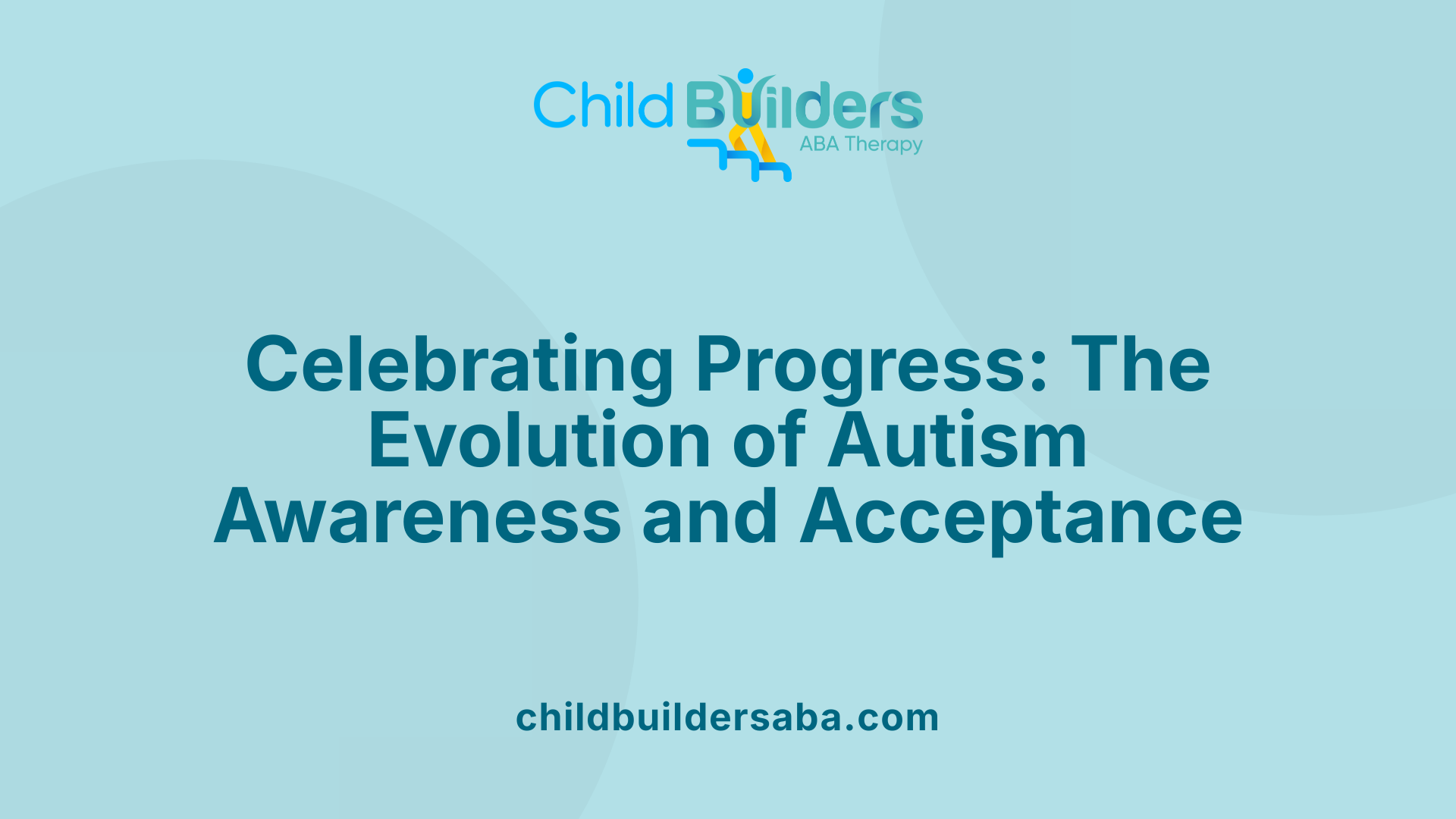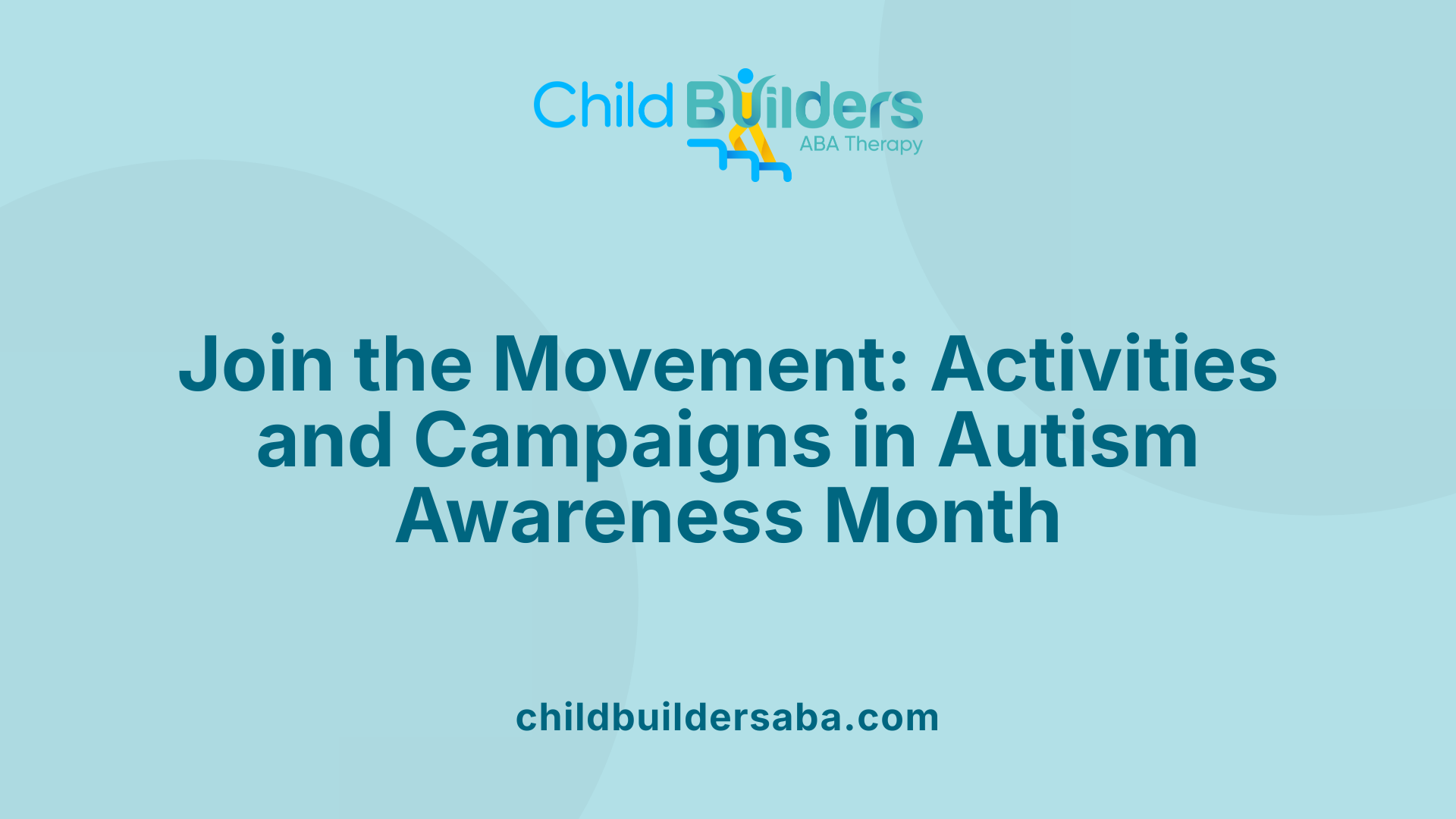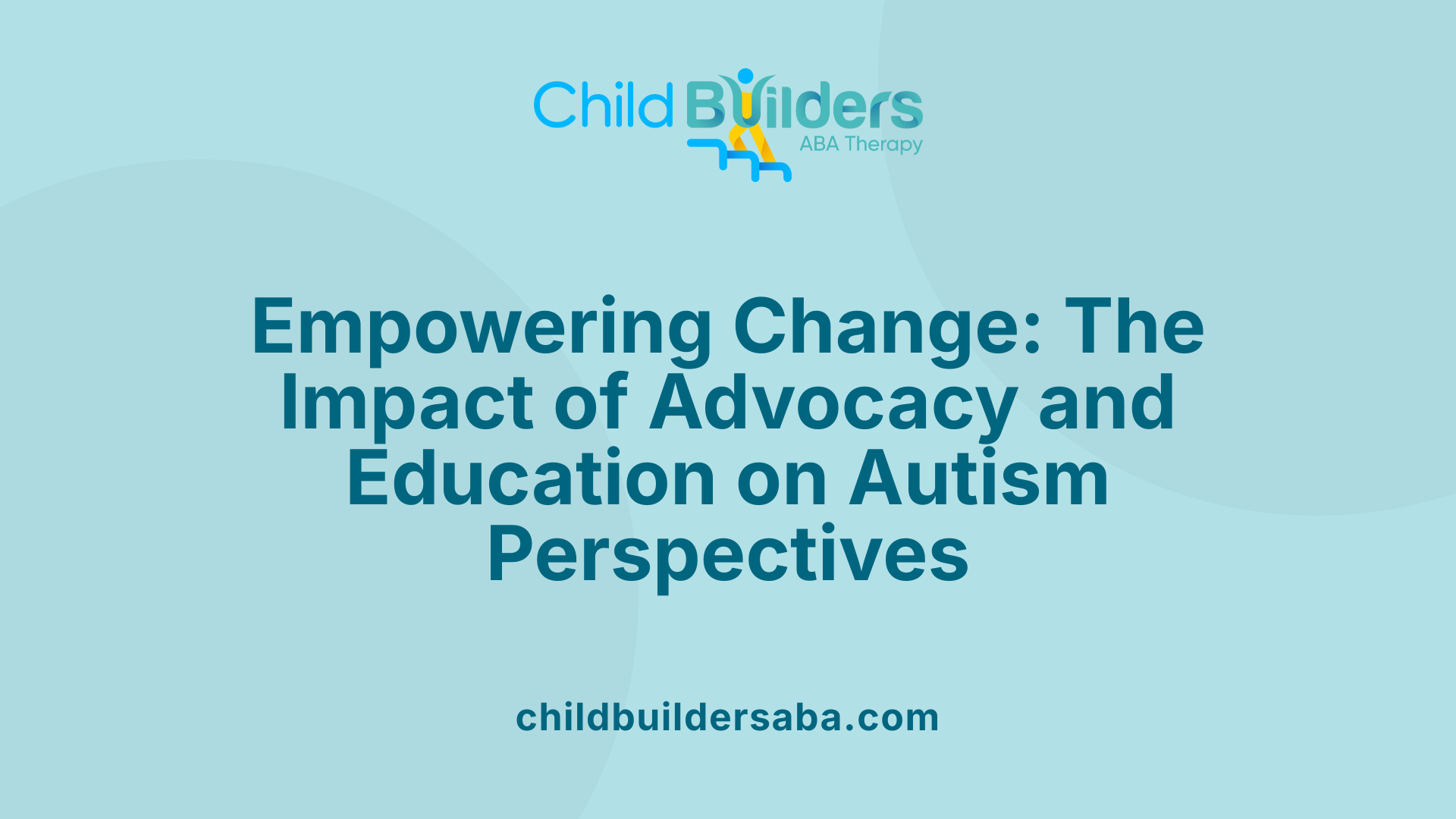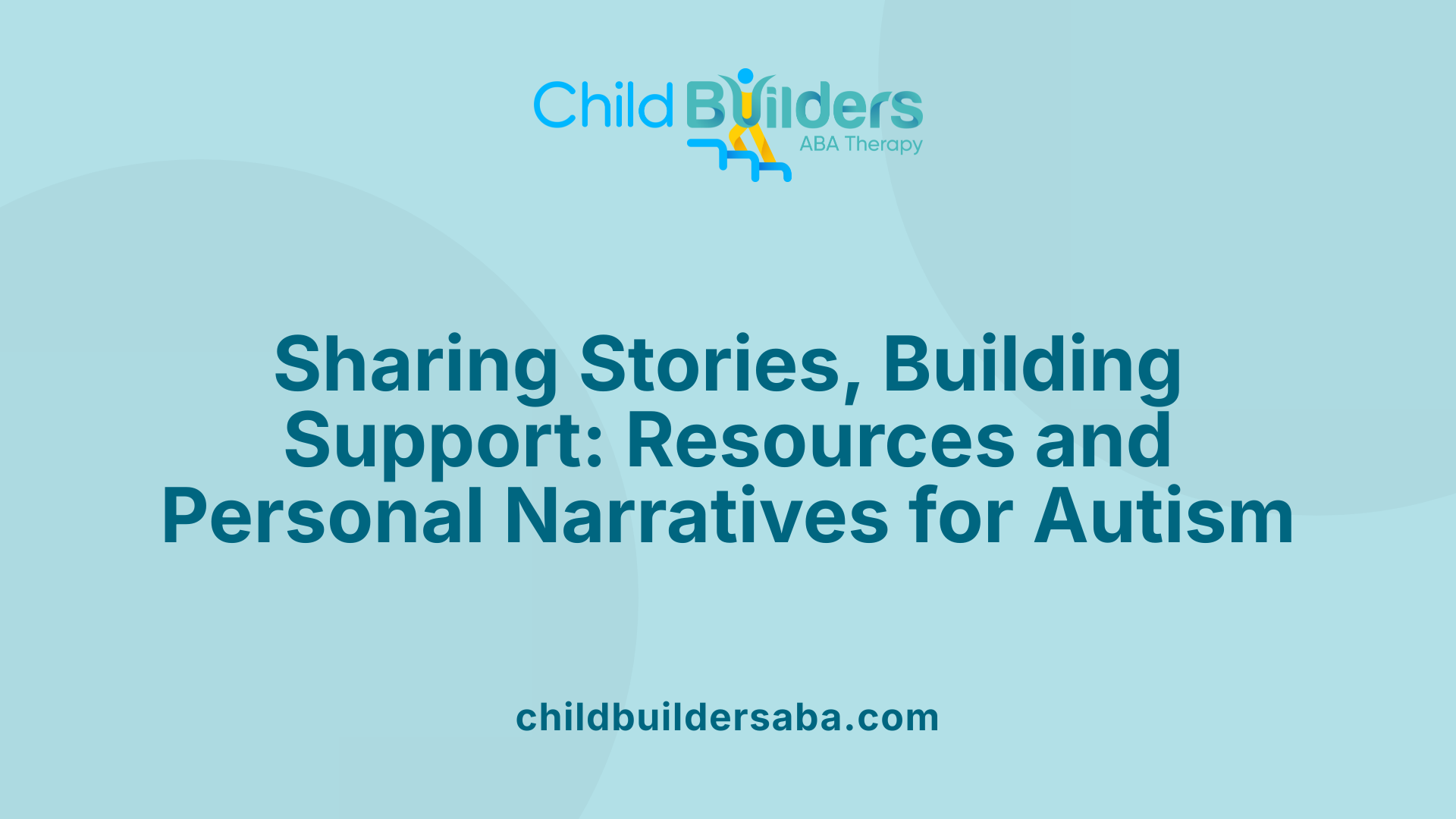World Autism Month

Understanding and Supporting the Autism Community
April marks a dedicated time to celebrate, educate, and advocate for individuals on the autism spectrum worldwide. Known as World Autism Month, this period promotes awareness, acceptance, and inclusion, emphasizing the uniqueness and potential of all autistic individuals. With a history rooted in decades of advocacy, organizations like Autism Speaks and the Autism Society of America have pioneered efforts to foster understanding and support. This article explores the significance, activities, and ongoing initiatives that define this influential month, aiming to foster a more inclusive and compassionate society.
Historical and Global Significance of Autism Awareness and Acceptance

Origins of autism awareness campaigns
Autism awareness campaigns have evolved over decades to improve understanding and support for individuals on the autism spectrum. The first formal recognition of autism awareness in April 1970 was initiated by psychologist Bernard Rimland, signaling the beginning of dedicated efforts to inform the public.
The visual symbol that emerged early in these campaigns was the puzzle piece, introduced in 1963 by the National Autistic Society, symbolizing the complexity and diversity of autism. Over the years, organizations like Autism Speaks launched prominent initiatives such as the 'Light It Up Blue' campaign in 2004 to enhance visibility. These events often included community events, media outreach, and advocacy to increase knowledge.
Since 2008, the United Nations designated April 2 as World Autism Awareness Day, globalizing the effort and emphasizing the universal importance of understanding autism. Countries worldwide adopted various campaigns—such as sports challenge events like 'Making Waves for Autism' in Canada and awareness activities in Australia—highlighting autism’s impact across different cultures.
Shift from awareness to acceptance
Initially, the focus was on raising awareness about autism—what it was, how prevalent it had become, and the need for education and resources. However, over time, there was a recognition that awareness alone was insufficient.
By 2011, advocacy groups, including the Autism Self-Advocacy Network, began emphasizing a transition from awareness to acceptance. This was reflected in the renaming of the observance from Autism Awareness Month to Autism Acceptance Month. The aim was to promote understanding, respect, and societal inclusion, recognizing autism as a natural human variation rather than solely a disorder needing cure.
This paradigm shift was supported by initiatives like sharing autistic voices, promoting neurodiversity, and advocating for policies that support inclusion in schools, workplaces, and communities. The 2020 official change by the Autism Society of America marked a formal commitment to fostering acceptance, addressing stigma, and celebrating the strengths of autistic individuals.
Global recognition and observances
Today, Autism Acceptance and Awareness are observed internationally. Since 2008, the UN has played a pivotal role by institutionalizing World Autism Day, featuring annual themes to spotlight various issues, including education, employment, and neurodiversity.
In 2025, the UN’s theme, 'Advancing Neurodiversity and the UN SDGs,' will focus on how policies can promote inclusive development and accessibility. Events like keynote speeches, panel discussions, and art exhibitions foster global dialogue.
Nationally, countries like the US, UK, Canada, and Australia hold public awareness campaigns, fundraising challenges, and community activities during April. These efforts aim to destigmatize autism, promote early intervention, and encourage societal acceptance.
The increasing prominence of these observances signifies a worldwide commitment to building an inclusive environment where autistic individuals can thrive, leveraging education, advocacy, and community support.
| Aspect | Description | Notable Examples |
|---|---|---|
| Origins | Began with early campaigns and symbols like the puzzle piece | Autism Speaks 'Light It Up Blue', 2004 |
| Shift Focus | From awareness to inclusion and acceptance | Recognition by Autism Society of America, 2020 |
| Global Observance | UN’s World Autism Day, 2008 | Themed events, international campaigns |
| Current Goals | Promote understanding, acceptance, and support | Advocacy campaigns, policy initiatives |
Through ongoing efforts, the global autism community continues to push for a society that recognizes both the challenges and strengths of autistic individuals, fostering a more inclusive, respectful world.
Activities and Campaigns During World Autism Month

Fundraising challenges and community events
During April, numerous organizations host fundraising challenges and community events to support autism research and services. These activities often include charity runs, sports events, and creative challenges like the popular 36-mile walk, encouraging community participation and raising funds for autism initiatives. These events serve both as awareness platforms and as vital sources of funding for programs that provide education, healthcare, and employment support for autistic individuals.
Educational campaigns
Autism Speaks and other groups organize educational campaigns throughout the month to share stories and increase understanding about autism spectrum disorder (ASD). These campaigns utilize digital platforms, school programs, and public events to dispel myths, highlight strengths, and educate the public about early signs and interventions. Materials such as social media graphics, informational toolkits, and workshops help promote inclusive environments and foster acceptance.
Social media initiatives
Social media plays a significant role in Autism Month activities. Campaigns like 'Light It Up Blue' and the sharing of personal stories on platforms like Instagram, Facebook, and Twitter help spread awareness widely. Supporters are encouraged to share posts, use hashtags like #AutismAcceptance and #LightItUpBlue, and wear blue attire to show solidarity. These digital efforts help reach diverse audiences and build a global community committed to understanding and supporting autistic individuals.
Autism-friendly training and workshops
Many organizations offer autism-friendly training sessions and workshops aimed at schools, workplaces, and public service providers. These sessions educate staff on how to create supportive, sensory-friendly environments, improve communication, and offer proper accommodations. For instance, autism-friendly training programs teach sensory management techniques, social skills development, and effective ways to involve autistic individuals in various settings.
| Campaign Type | Main Activities | Objectives | Examples |
|---|---|---|---|
| Fundraising Events | Runs, challenges, walks | Raise funds, foster community spirit | 36-mile challenge, charity runs |
| Educational Campaigns | Story sharing, info distribution | Increase understanding, dispel myths | Website features, school programs |
| Social Media Campaigns | Hashtag campaigns, awareness days | Increase reach, promote acceptance | #AutismAcceptance, Light It Up Blue |
| Training & Workshops | Sensory-friendly training, caregiver education | Improve environment support | Autism awareness workshops, workplace training |
Through these varied activities, Autism Month continues to foster a culture of acceptance, support, and inclusion for people with autism. It emphasizes the importance of community involvement and education in creating a world where every individual can reach their full potential.
The Role of Advocacy and Education in Changing Perspectives

How is autism caused and what does research suggest about its causes?
Research indicates that autism spectrum disorder (ASD) has a strong genetic basis, with heritability estimates around 80-83%, suggesting that genetic factors play a central role in its development. Twin studies show that identical twins have a 60-90% chance of both being diagnosed with autism, further supporting the importance of genetics. Inherited gene mutations and specific patterns of inheritance contribute to ASD risk, while nonshared environmental factors also have some influence. Prenatal environmental exposures, such as maternal infections, toxins, and health conditions during pregnancy, can increase the likelihood of autism. Overall, while genetics are primary, environmental factors during pregnancy can also impact neurodevelopment and autism risk. These insights have driven policy development, increased funding for research, and the development of early intervention programs.
What efforts are ongoing to promote inclusive environments and access to resources?
Various initiatives are underway to foster inclusivity and improve access to resources for individuals with autism. Campaigns like "Kids Play for Autism" and "Making Waves for Autism" actively engage communities through activities such as sports, water challenges, and fundraising events, aiming to raise awareness and acceptance. The Autism Society of America provides toolkits for schools and workplaces to promote autism acceptance, emphasizing the importance of creating supportive environments in educational and employment settings. Furthermore, advocacy for policies that ensure better access to healthcare, educational resources, and employment opportunities remains a priority. These initiatives recognize that early intervention, ongoing support, and societal understanding are vital for helping individuals with autism reach their full potential. By promoting community involvement and inclusive policies, these efforts aim to dismantle barriers and foster a society that values neurodiversity.
How has the understanding of autism evolved over time?
The perception of autism has undergone a significant transformation since its initial recognition over a century ago. Eugen Bleuler first introduced autism in 1911, initially linking it to schizophrenia. In 1943, Leo Kanner formally described autism as a distinct psychiatric disorder characterized by obsessive behaviors, echolalia, and impaired social interactions. Throughout the following decades, research revealed that autism is best understood as a spectrum disorder, acknowledging the wide variability in symptoms, abilities, and challenges faced by individuals. This shift culminated in the DSM-5's adoption of the term "autism spectrum disorder" in 2013, which unified previous diagnoses such as Asperger’s disorder and pervasive developmental disorder (PDD-NOS). Societal perceptions have also changed, moving away from viewing autism solely as a medical anomaly to recognizing it as a form of neurodiversity. This perspective emphasizes acceptance, the celebration of differences, and the importance of supporting individuals’ rights to inclusion and full participation in society.
| Aspect | Past Understanding | Current Perspective | Influence on Policy and Society |
|---|---|---|---|
| Origin and Identification | Linked to schizophrenia (1911); distinct disorder (1943) | Recognized as a spectrum; neurodiversity movement | Promotes early diagnosis, support, acceptance, and inclusion |
| Diagnostic Approach | Fragmented diagnoses, e.g., Asperger’s, PDD-NOS | Unified diagnosis: Autism Spectrum Disorder | Leads to broader support and tailored interventions |
| Societal Attitudes | Viewed through a medical lens; stigma | Emphasis on acceptance, rights, and strengths | Fosters community support and policy reforms |
Overall, the evolving understanding of autism continues to foster greater acceptance, informed policies, and a supportive environment for autistic individuals and their families.
Supporting the Autism Community Through Resources and Personal Stories

Tools for Early Detection and Intervention
Early detection of autism spectrum disorder (ASD) is crucial for improving outcomes. Resources like the CDC’s tools and programs—such as the ADDM Network and SEED Study—help identify signs of autism early. These tools aid parents, teachers, and healthcare providers in recognizing developmental milestones and behaviors associated with ASD. Early intervention services can then be initiated, offering tailored therapies and support that significantly enhance communication, social skills, and learning.
Community and Online Resources
Numerous organizations offer valuable resources to support individuals with autism and their families. The Autism Society of America, Autism Speaks, and the Northwest Autism Center provide educational materials, local support groups, and advocacy initiatives. Online communities also create safe spaces for sharing experiences, advice, and emotional support. For example, Autism Now Center and ISAAC Foundation host forums and webinars that help families navigate challenges and access services.
Personal Stories and Advocacy
Personal stories from autistic individuals and their families serve as powerful tools for fostering understanding and acceptance. These narratives help dispel myths, highlight diverse experiences, and promote inclusion. Campaigns like "Autism Is" and the "Road to Acceptance" project amplify voices from the community, emphasizing strengths and unique perspectives. Advocacy efforts—such as fundraising events and awareness campaigns like "Light It Up Blue"—encourage broader societal support and policy change to improve quality of life for people with autism.
| Resource Type | Examples | Purpose |
|---|---|---|
| Early Detection Tools | CDC ADDM Network, SEED Study | Identify early signs, inform intervention planning |
| Community Resources | Autism Society of America, Autism Speaks | Education, support, advocacy |
| Personal Narratives | "Autism Is" Campaign, "Road to Acceptance" | Increase understanding, promote acceptance |
A Call to Action for Lasting Change
As we observe World Autism Month, it is essential to continue promoting understanding, acceptance, and support for individuals living with autism. Whether through educational activities, advocacy, or community engagement, every effort contributes to a more inclusive world. By recognizing the diversity and potential of autistic individuals, society can foster environments where everyone is empowered to thrive. Let this month be not just a time for awareness, but a catalyst for ongoing change, understanding, and acceptance that endures beyond April.
References
- World Autism Month - Autism Speaks
- World Autism Month - American Autism Association
- Autism Acceptance Month 2025 - Cerebral Palsy Guide
- Autism Acceptance Month: The History and Impact - Neurology Advisor
- Autism Partner Toolkit | Autism Spectrum Disorder (ASD) - CDC
- Autism Acceptance Month - Autism Society
- Welcome - World Autism Awareness & Acceptance Month
- World Autism Awareness Day - EN | United Nations
- 5 History Facts About Autism Awareness Month - Deron School
- World Autism Awareness Day - Wikipedia






.jpg)






























































































